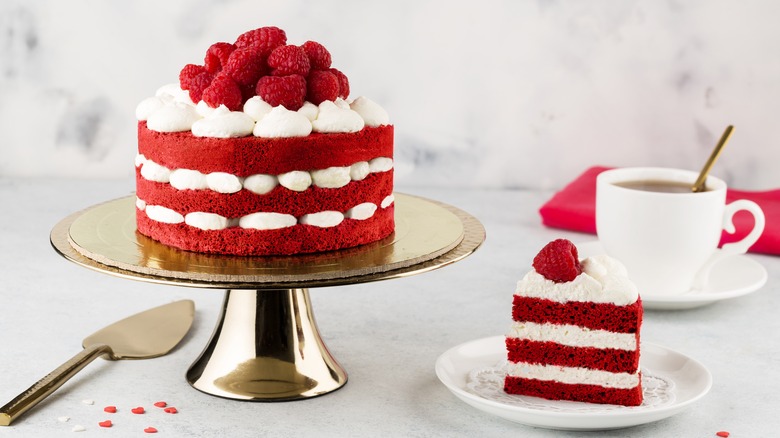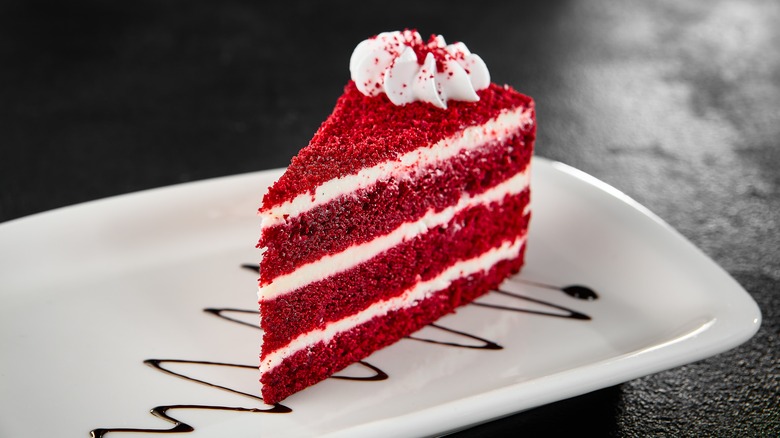Here's The Real Flavor Of Red Velvet
In an ever-present culture of ultra-manufactured confectionary delights, there's no shortage of vibrant (and seemingly unnatural) colors. Some flavors, such as the infamous blue raspberry, are considered separate from their non-food-dyed counterparts without major differences in flavor. It's easy to assume that red velvet is just another example of this phenomenon, but this is far from accurate. While the classic red velvet cake is made with red food coloring, it's so much more than just a dyed chocolate cake. The dessert gets its unique flavor from a clever combination of cocoa powder and vanilla with an added source of acid for its distinctive, tangy aftertaste.
Standard chocolate cakes are flavored using cocoa powder and chocolate to create the cake's signature deep, rich, taste. Red velvet, on the other hand, doesn't use chocolate in its flavoring, and uses significantly less cocoa powder. This results in a milder flavor overall, especially when paired with the light yet sweet notes of vanilla extract. Arguably the most important addition in a red velvet cake compared to other flavors is the addition of acid. The acid is typically sourced from buttermilk or white vinegar, which provides a tangy aftertaste that complements the subtle flavors from both the cocoa and vanilla, as well as the richness of the cream cheese frosting. The inclusion of acid is also the scientific reason red velvet cake is red, as the non-Dutch cocoa powder (which is highly reactive to changes in pH) turns a dark maroon when exposed to acidic substances.
It's not just flavor that makes red velvet cake unique, it's texture, too
While red velvet's flavor is usually the star of the show, the dessert's unique texture should not be overlooked. Like many other culinary delights, the exact history of red velvet cake isn't known in great detail. What we do know, however, is that the dessert likely got its name from its velvety texture, which is significantly lighter than most other cakes. Historically speaking, flour wasn't always as finely milled and smooth as it is today. To counteract the coarseness of Victorian-era cake flour, bakers added a small amount of cocoa. It wasn't enough cocoa to create a chocolate cake in terms of flavor, but enough to help lighten the flour's texture.
This lightness in texture is still cherished today. Compared to many other cakes, red velvet is much easier to cut with a fork thanks to the dessert's smooth and fine crumb. Also, since red velvet is so light, it is incredibly popular as the base of a layered cake. This is because it can effectively stack up high with a low risk of collapse, even with the added weight of the cream cheese frosting.

